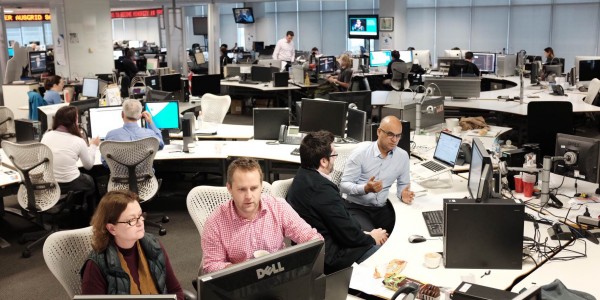Our Top Stories of 2016

From the public debut of Superdesk, our all-in-one content platform + newsroom management system, to individual tools and projects supporting independent media, our focus is on technology that supports the work of journalists, authors and broadcasters of all sizes, in every part of the world.
Reshaping the news business
Superdesk is not just a tool for journalists. It was created alongside journalists in newsrooms around the world. The result of three years of intensive collaboration with our media partners, Superdesk is designed to make everyone’s job in a news organisation easier and more creative, while also amplifying the reach and power of content.
In May, Superdesk had its first public release.
“Superdesk is more than an end-to-end news creation, production, curation, distribution and publishing platform,” said Sava Tatić, Sourcefabric’s managing director. “We at Sourcefabric also see it as the cornerstone of the new common open source code for quality, professional journalism.”
Our first public beta.
In September, the first production implementation of Superdesk went live at AAP in Australia. Superdesk replaced two of AAP’s legacy systems, which distributed content both internally and externally to its wire service customers as well as to digital clients.
While the AAP publishes much of its content from its central newsroom in Sydney, it has 600 employees spread out all over the world. Keeping up with a 24-hour news cycle that involves editing nearly 16,000 stories a week and reach more than 11 million readers is what Superdesk was made for. But the AAP also chose Superdesk to meet its future needs. Thanks to its flexibility, the system can evolve in tandem with AAP’s business roadmap.
Journalists in an NTB newsroom.
Our partner NTB, the Norwegian national news agency, began testing Superdesk in production by the end of the year, with the goal of bringing its entire newsroom operation online in the first half of 2017.
Creating a new syndication model for live coverage
Linking national news agencies like NTB and AAP with smaller media outlets is part of the idea behind our Live Coverage Ecosystem (LCE) project. The LCE represents an entirely new form of syndication where different news organisations can exchange and subscribe to one another’s breaking news coverage — all in real time.
With the grant from the Google Digital News Initiative Fund that was announced in March, we started building Live Blog into a foundation for the LCE. Our main project partner is dpa-newslab, the innovation arm of the German national news agency. Their developers made an open source “translator” component called Livebridge that allows content from dpa’s Live Blog to be sent to any other content management system. This is already in production at dpa, and a marketplace for syndicated Live Blog coverage is on its way soon.
Bringing open source innovation to new markets
Presenters at the Prague News Impact Summit.
Open source innovation was a key item on the agenda at the News Impact Summit that took place in Prague in October. We partnered with the European Journalism Centre to convene a forum to discuss technical tools as well as the skills needed to stay ahead in a changing news landscape. We believe this is key to fostering independent, quality media in developing markets like the Czech Republic.
Supporting independent media
Meanwhile, in the South Caucasus, we have been supporting Microwav.fm, a youth radio project aimed at capacity building in the region’s emerging democracies. The radio network is running on Airtime Pro. A number of new stations to the network were added in 2016, and several groups of young journalists were trained in PR and social media strategy as well as the basics of radio programming.
Early in the year, we developed mobile applications for online stations including Activist Radio (Armenia) and Helping Hand Radio (Georgia). They are available as free downloads from both Google Play and the App Store.
At the end of October, over 50 participants from the microwav.fm project gathered in Minsk for a Radio Summit.
Another project that connected us to more independent media creators and producers in different parts of the world was our Microwav.fm initiative. Launched in February, the programme's purpose is to provide free live blogging tools and services to one NGO or media grantee. When the award was announced in May, the winners included Contexto, an online newspaper in Spain and Radio Bullets, a podcast from Italy. Though dispersed geographically and by focus, the winners saw Live Blog not only as a key tool for increasing engagement with their audience but, also as one put it, “an opportunity to shape the future of social storytelling.”
Expanding possibilities for authors, DJs and others to create and collaborate
While our main focus is on the news industry, Sourcefabric software also supports media creators who work in a variety of content and formats. This year we unveiled new features in several of our products that will expand the creative possibilities for those in radio and book publishing in particular.
The new Radio page.
In Airtime Pro, we added a number of new features over the course of the year, including podcasting, along with easier station scheduling and automation thanks to Rotations and AutoDJ. We’re also making radio more social for Airtime Pro with Twitter integration and a Facebook player widget, along with other sharing options in the brand-new Radio Page.
Booktype got more powerful with a new, professional image editor, while also expanding its reach with the epubli self-publishing platform. Also, our collaborative authoring platform Omnibook became a finalist in the CONTENTshift startup competition for innovation in e-publishing, presented at the Frankfurt Book Fair in October.
